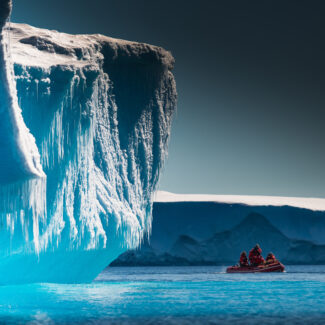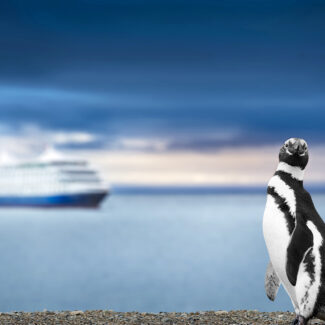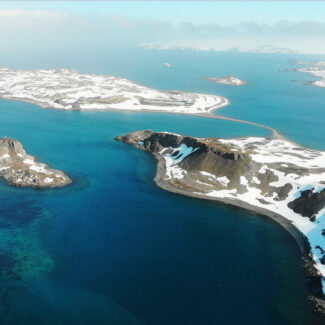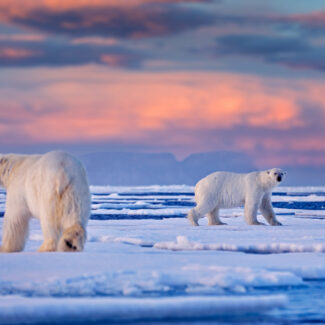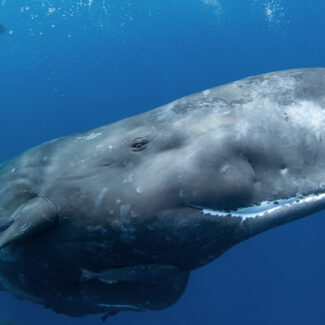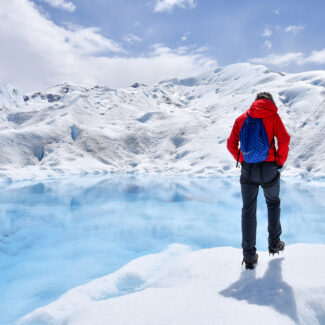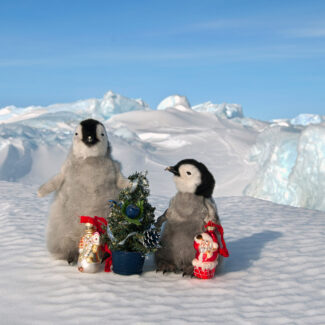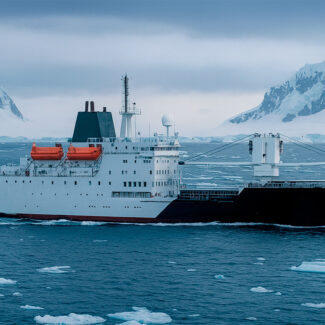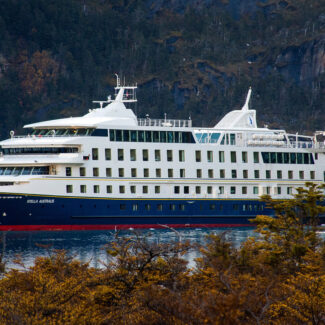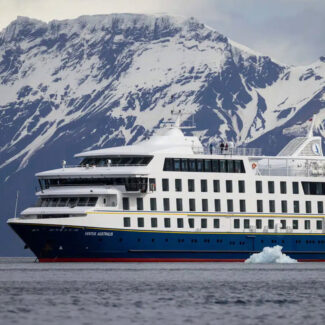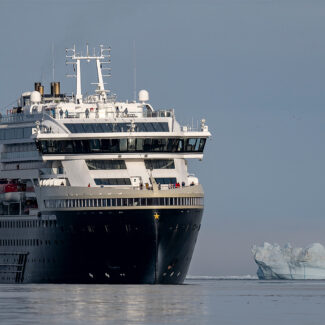10 Wild Wolverine Facts: A Marvel Of The Arctic Kingdom
Few members of the animal kingdom enjoy such an amped-up reputation as the wolverine—and not just on account of the Marvel superhero named after this Northern Hemisphere mustelid.
Although it’s found extensively in the sprawling timberlands of the boreal forest as well as some temperate alpine strongholds, the wolverine is arguably best sought-out amid the open vastness of the Arctic tundra, where it ranks as an upper-level predator and scavenger more than capable of holding its own among wolves and grizzlies.
In this article, we’ll delve into the natural history of the wolverine—also known as the “skunk bear” (for its musky scent glands and ursid-like form), the “glutton” (for its allegedly rapacious appetite), and the “carcajou” (an enduring French-Canadian label).
Glimpse the elusive wolverine in its natural habitat! Often called the “skunk bear” for its scent and bear-like gait, this powerful creature roams vast Arctic and subarctic territories, embodying the wild spirit of the far north. Prepare to discover more fascinating facts about this incredible survivor!
1. The Largest Land Weasel
The wolverine is the heftiest terrestrial member of the weasel family (Mustelidae), only outweighed among mustelids by the aquatic sea otter, giant otter, and African clawless otter. Male wolverines may tip the scales at 40 pounds (18 kilograms) or more. Given it adds heavier-duty claws to the strong, toothy bite those otters also possess, you could certainly make a strong argument that the “skunk bear” is the all-around most formidable of all weasels.
2. Distinctive Physical Appearance
In terms of physical appearance, the wolverine is a shaggy beast with a broad head, shortish legs with oversized paws, and a bushy tail. The rich fur is dark brown or blackish with yellowish stripes running along the sides and white or yellowish mottling on the throat and chest.
Look closely at these incredible paws! Wolverines possess large, five-toed feet with non-retractable claws, acting like natural snowshoes and providing exceptional grip on icy terrain – a key adaptation for their rugged Arctic existence.
3. Wide Arctic Distribution
Wolverines have a circumboreal/circumpolar distribution in the Northern Hemisphere. The southern reaches of their global range extend into the lower-latitude fringe of the boreal forest (taiga) and the conifer forests and tundra of temperate mountain country. The northern limit of their dominion reaches well beyond latitudinal treeline into the Arctic tundra and highlands.
A 2022 Polar Biology article assessed current knowledge regarding the wolverine’s Arctic range, showing that this realm accounts for about a quarter of the species’ global geography by area. Wolverines are widely distributed in this high-latitude region, but not uniformly: They are absent, for example, from Svalbard, which—while offering what seems like ample prey/carrion—may simply be too far removed from the mainland to have been colonized. A lot of where in the Arctic wolverines are found and where they aren’t seems correlated with the distribution of primary fodder: Wolverines are absent, the Polar Biology paper notes, from many islands in the Canadian and Russian High Arctic which either lack caribou/reindeer or support them in very low numbers, and where muskoxen—the presence of which seems to buffer wolverine populations where caribou are scarce or missing—also aren’t available.
The islands of the Canadian Arctic Archipelago that do have wolverines, which is the majority of them, tend to also have caribou; and the only Russian High Arctic island with a documented breeding wolverine population—Wrangel Island—is one with a (reintroduced) population of muskoxen.
The relative scarcity of wolverine reports from Greenland is, as the Polar Biology study points out, somewhat surprising, as that giant island supports a goodly stock of meat-on-the-hoof—caribou and muskoxen—and is very close to the wolverine-prowled Ellesmere Island (Canada). Wolverines appear to be only occasional visitors to Greenland.
Meanwhile, Arctic wolverines also used to roam the Ungava Peninsula of Quebec, but were extirpated in the historical past, and a population has not re-established itself despite what would seem to be an adequate prey base.
From the frigid expanses of the high Arctic to the boreal forests and even some alpine regions, the hardy wolverine’s presence is a testament to its incredible ability to thrive across a diverse range of northern habitats.
4. Diverse Arctic Diet
Ungulates—hoofed mammals—are mainstays of the wolverine diet just about anywhere the big weasel’s found, though a lot of that meaty intake definitely takes the form of carrion. As elsewhere across their domain, wolverines in the Arctic readily seek out the kills of wolf packs: caribou and muskoxen primarily, as well as moose closer to the treeline. Some of the dead meat they scavenge also stems from the predatory action of barren-ground grizzly bears, perhaps polar bears as well—and, of course, the relentless mortality imposed by disease, starvation, winter weather, and avalanches.
But wolverines can be plenty predatory themselves. They’re quite capable of taking down critters as large as full-grown caribou as well as muskoxen and moose calves, particularly in winter when a deep snowpack—coupled with their comparatively light weight and snowshoe-like paws—allows them to speedily float atop the surface of snow while heavier prey flounders.
Rodents—lemmings, voles, ground squirrels, and the like—are also mainstay Arctic wolverine prey, as are birds and bird eggs. Wolverines foraging along Arctic coastlines and out onto the sea ice—several miles from the mainland or more—will also scavenge, and likely prey upon, seals; indeed, yearly movements of Arctic wolverines in some areas suggest they’re beelining for seal-pupping areas.
This wolverine’s curious lick hints at its opportunistic and varied diet. As true omnivores of the Arctic, they scavenge and hunt everything from small mammals and birds to berries and even tough carcasses, showcasing their remarkable adaptability to survive in a challenging environment.
5. Extensive Roaming
Wolverines are active year-round; they don’t hibernate during the winter. They’re fabulous, dogged roamers; tracking studies show they can cover an almost staggering amount of ground in a given day of activity: 25-plus miles, often of the up-and-down terrain variety. As with many carnivores, male wolverines maintain a broader home range than females; it may be 800 square miles in the Arctic.
6. Reliance on Snow
Snow is a vital resource for the wolverine—not to mention a fact of life for much of the year in carcajou country. Along with the aforementioned predatory advantage the white stuff provides, wolverines scavenge melting snowdrifts and avalanche deposits, and cache meat in piles of snow. Female wolverines across much of the species’ range preferentially dig dens directly in snowbanks that last deep into the spring season. Research by the Wildlife Conservation Society (WCS) on Alaska’s North Slope shows these snow dens are impressively complicated: often 10-plus feet deep, 200 feet long, with separate chambers for sleeping areas, latrines, and stashed food.
See how this wolverine seems perfectly at home in the deep snow! Their reliance on snow-covered environments is critical for denning, caching food, and even hunting, making them true masters of the winter landscape.
7. Legendary Strength and Tenacity
Wolverine strength and tenacity are downright legendary. “They’re just a vicious piece of muscle,” Inupiat hunter Qaiyaan Harcharch told Smithsonian Magazine in 2020. “Even the bears don’t mess with them little guys.”
And, indeed, the wolverine is well known for its outsized ferocity. In a sense, that’s not surprising, as most weasels possess a similarly punching-above-their-weight feistiness, and the “skunk-bear” happens to be an exceptionally big weasel. Stories of wolverines driving off grizzly bears, mountain lions, and other bigger carnivores are part of the animal’s enshrined legend.
But we shouldn’t overstate the point. Your average wolverine is likely to do its best to avoid run-ins with such competitors and potential predators. Wolves are probably the biggest (non-human) threat, given their pack-hunting nature and demonstrable tendency to occasionally hunt down wolverines. And it’s probably pretty safe to assume that many confrontations between grizzly bears—plenty irascible themselves—and wolverines end with the latter high-tailing it.
All of that said, let’s give credit to the spitfire nature of the wolverine—mirrored by such cousins as the American badger, the long-tailed weasel, and the honey badger (or ratel) of Africa, but packaged in an especially burly form. A critter that can burn up a couple of dozen rugged miles in a day and take down a full-grown caribou many times its size is nothing to be casually messed with, after all!
Don’t let its size fool you! This seemingly unassuming wolverine embodies incredible strength and a tenacious spirit, capable of defending its kills and surviving in harsh conditions that belie its appearance.
8. Relationship With People Climate Change
Given the fierceness, scrappiness, and elusiveness of the wolverine, it’s no surprise this muscled-up weasel—the qavvik of the Inupiaq, the қeper of the Chukchi, the ńitlә of the Tundra Yukaghir—has long made an impression on the human beings of the Arctic and subarctic. For one thing, its up-for-the-Arctic-elements fur was and is prized for the lining of hoods and parkas.
9. Climate Change Concerns
The impacts of a warming climate on persistent spring snow—such a vital reproductive resource for wolverines in many areas—is a major focus of study among wildlife biologists and conservationists. It’s also simply unclear how significant sea ice is in terms of facilitating wolverine dispersal and hunting in the High Arctic; as for polar bears, its decline may well adversely affect the skunk-bear.
10. Witnessing Wolverines In The Wild
We’ll be honest: The odds that you’ll clap eyes upon a wolverine in the Arctic are mighty slim indeed. These are phantom-like creatures, far-ranging and thinly distributed, and any sighting is of once-in-a-lifetime material.
But you’ve certainly got at least a chance cruising the shores of the Canadian Arctic or East Greenland, or visiting the Far North of Alaska or the beautiful barrens of Russia’s Wrangel Island. Wolverine tracks are also highly distinctive, so even if you don’t see the supersized weasel in question, you might stumble upon their loping trace!
rare glimpse into the secretive life of a wolverine! Spotting one of these elusive creatures high in a snow-laden tree is an unforgettable testament to their adaptability and rugged independence in their wild domain.
Disclaimer
Our travel guides are for informational purposes only. While we aim to provide accurate and up-to-date information, Antarctica Cruises makes no representations as to the accuracy or completeness of any information in our guides or found by following any link on this site.
Antarctica Cruises cannot and will not accept responsibility for any omissions or inaccuracies, or for any consequences arising therefrom, including any losses, injuries, or damages resulting from the display or use of this information.


